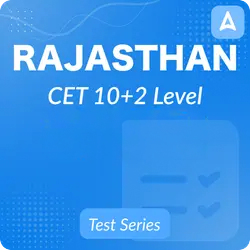India’s space agency, ISRO (Indian Space Research Organization), is gearing up for its third lunar exploration mission – Chandrayaan-3, launched on July 14, 2023. This mission aims to rectify the setbacks encountered during its predecessor, Chandrayaan-2, and accomplish a successful soft landing on the lunar surface along with rover exploration. In this article, we will delve into the key differences between these two missions.
Mission Design and Approach:

Chandrayaan-2:
- Chandrayaan-2 comprised an orbiter, a lander named Vikram, and a rover named Pragyan.
- The mission design followed a success-based approach, aiming for a precise landing within a targeted 500mx500m area.
- The Vikram lander carried a central thruster and had five legs.
Chandrayaan-3:
- Chandrayaan-3 is designed with a focus on failure-based strategies to enhance mission success.
- The mission includes a lander named Vikram and a rover named Pragyan, omitting the orbiter from the configuration.
- The landing area has been expanded, allowing the lander to safely touch down anywhere within a 4kmx2.4km area.
- Vikram lander has been equipped with more fuel for longer travel distances to reach the landing site or an alternate site if needed.
- The lander’s landing site determination has been improved by integrating high-resolution images from Chandrayaan-2’s orbiter.
- Changes in the lander’s physical structure include removing the central thruster, strengthening the legs for higher velocity landings, and adding more solar panels for increased power generation.
Payloads and Scientific Instruments:
Chandrayaan-2:
- Chandrayaan-2’s payloads included scientific instruments on the orbiter, lander, and rover.
- The orbiter carried instruments to study the Moon’s surface and exosphere, among others.
- Lander payloads included RAMBHA, ChaSTE, ILSA, and LP, aimed at measuring various aspects of the lunar environment.
- The Pragyan rover had Alpha Particle X-ray Spectrometer (APXS) and Laser Induced Breakdown Spectroscope (LIBS) for elemental analysis.
Chandrayaan-3:
- The propulsion module of Chandrayaan-3 carries the SHAPE payload, designed to search for habitable planets through spectro-polarimetry.
- Lander payloads include RAMBHA (from NASA), ChaSTE, ILSA, and LP, similar to Chandrayaan-2, measuring seismicity, thermal properties, and more.
- Rover payloads remain consistent with APXS and LIBS for in-situ elemental composition analysis.
Implementation and Soft Landing:
Chandrayaan-2:
- The Vikram lander attempted a soft landing on the lunar surface but faced a failure during descent due to a last-minute glitch.
- Chandrayaan-2’s Pragyan rover couldn’t be deployed due to the unsuccessful landing.
Chandrayaan-3:
- Chandrayaan-3 aims to achieve a successful soft landing with Vikram and deploy Pragyan rover to explore the lunar surface.
- The changes in design and improvements in landing site determination increase the chances of a successful landing.
Significance and International Context:
- Chandrayaan-2’s setback highlighted the complexity and challenges of lunar exploration, inspiring a failure-based approach in Chandrayaan-3.
- If Chandrayaan-3 succeeds in its mission objectives, India will become the fourth country to achieve a successful soft landing on the Moon, following the US, Russia, and China.










 States and Capitals - How Many States in...
States and Capitals - How Many States in...
 Top-10 Happiest States in India in 2025,...
Top-10 Happiest States in India in 2025,...
 Top-5 Richest Countries in South America...
Top-5 Richest Countries in South America...

